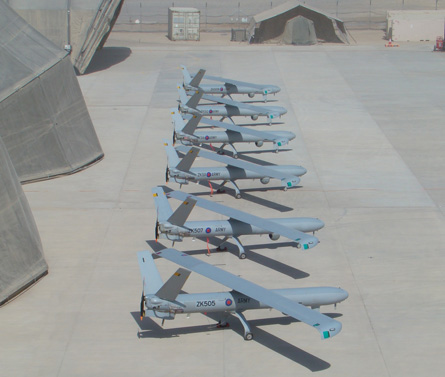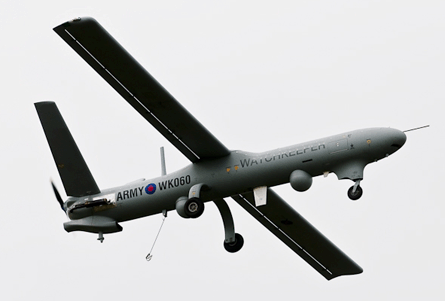The British Army is to receive continued intelligence, surveillance, target acquisition and reconnaissance services in Afghanistan using leased Hermes 450 unmanned air vehicles, while it moves closer to fielding its own Watchkeeper system.
Elbit Systems/Thales UK joint venture UAS Tactical Systems (U-TacS) - prime contractor for the Watchkeeper deal - has been awarded a follow-on contract under an urgent operational requirement deal worth about £44.5 million ($70 million), Elbit says.
The new deal will extend the company's current tactical UAV service in Afghanistan by a further 18 months. Implemented in 2007 and extended last year, this includes the provision of Hermes 450 air vehicles, plus in-theatre support.
 |
|---|
© Thales UK |
U-TacS will also train Ministry of Defence staff in the use and maintenance of the system and provide contractor logistic support and programme management services from Leicester in the UK. Elbit has a 51% stake in the company, with the rest owned by Thales UK.
Elbit chief executive Joseph Ackerman says the Hermes 450 continues to make a significant contribution to UK operations under very demanding circumstances. "This system is achieving exceptionally high levels of operational availability," he adds.
More than 30,000 flight hours had been logged under the urgent operational requirement by earlier this year.
Operated by UK personnel, the Israeli-made UAVs are serving as "gap fillers" until the army's Watchkeeper system achieves operational status in late 2011.
 |
|---|
© Thales UK |
The British Army's Watchkeeper UAV should enter service during 2011 |
Contracted in 2005, the Watchkeeper programme is under budget but around eight months behind schedule, according to data published in the UK National Audit Office's Major Projects Report 2010 document.
"The programme has experienced some technical issues concerning system software development and integration, which have impacted the programme timescales," the document says.
The TUAV project has a current budget forecast of £889 million, and Watchkeeper should enter service in February 2011, the NAO says.
Additional reporting by Craig Hoyle in London
Source: Flight International























